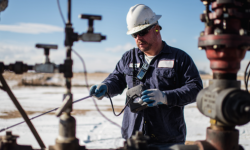When a worker was killed on a building site in the UK, the company was fined £2.6 million early this year under tough new UK laws, but if the same worker had died in Australia, the fine may have been just $170,000.
The UK government believes heavier health and safety penalties can reduce fatalities and injuries. A new penalty system for health and safety violations has been implemented in the UK since February of this year. This new UK law hinges the safety and health fine on the turnover of the company. For companies with turnover of £50 million or more, the fine could be up to £10 million. As an example, Balfour Beatty, an international infrastructure company based in the UK, was fined £3.5 million this year.
Not only are the fines heavier, but directors of negligent companies can be given custodial sentences or imprisonment, with sentences staring at 26 weeks. According to Halen Devery, a partner and head of health and safety at insurance and risk law specialist BLM, about 38 per cent of the health and safety fines issued in 2016 were from the construction industry. Construction companies in the UK paid nearly £8 million since the implementation of the new sentencing guidelines. The UK construction industry sees the new law as a game changer, setting a new standard of construction safety and health.
The change in the UK prompts us to think about whether Australia has done enough in enforcing workplace health and safety. Every year in Australia, more than 190 people die and over 60,000 people are hurt at work, with construction being the nation’s third top killer. Australia’s construction fatal injury rate is 1.5 times higher than the UK’s, and Australia’s workplace death rate is 3.5 times higher. Australia is no safer than the UK when it comes to workplace deaths, but our laws to protect workers are now much weaker than the UK, especially after the UK recently brought in much tougher fines.
While only time will tell whether heavier fines and imprisonment for health and safety violations can reduce the number of workplace injuries and fatalities, the idea of linking the penalty to turnover of the company is worth considering by the Australian government. Most of the time, safety and health penalties are so negligible as to mean nothing to large companies.
However, it is another story when the penalty for injuries is linked to the turnover of the company. The amount then becomes so significant that it can possibly turn the company’s net profit into to a net loss. The company has to dig deep to pay for the penalty. Shareholders can feel the effects and they will pressure senior management to pay serious attention to workplace health and safety. The potential imprisonment of negligent senior management would also bring about a top down change in the importance of safety.
The recent deaths in Eagle Farm Racecourse in Queensland, where two workers were killed when a concrete slab fell on them in a pit, urge us to think about the current law protection for the health and safety of workers and penalty imposed on employers in Queensland and Australia. It is hard to anticipate whether more stringent laws, like the one in the UK, can effectively enforce workplace safety and health in construction in Australia, but it is worthy of discussion.
Should the Australian government deem tougher health and safety penalties for workplace injuries a necessary step in bringing down the injury figures, the UK new sentencing guideline would be a good reference to start with.
Health and Safety Penalties for Workplace Injuries: UK vs Australia by Dr. Carol Hon. Available from <https://sourceable.net/health-and-safety-penalties-for-workplace-injuries-uk-vs-australia/>. [Wednesday, November 16th, 2016]









